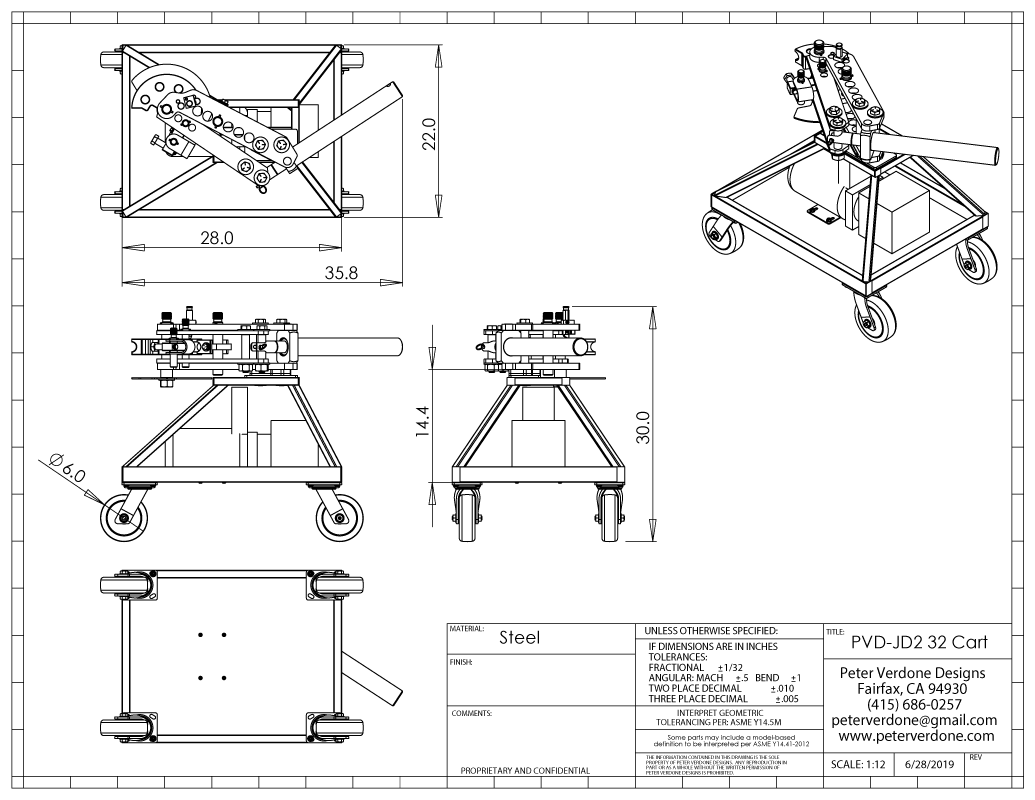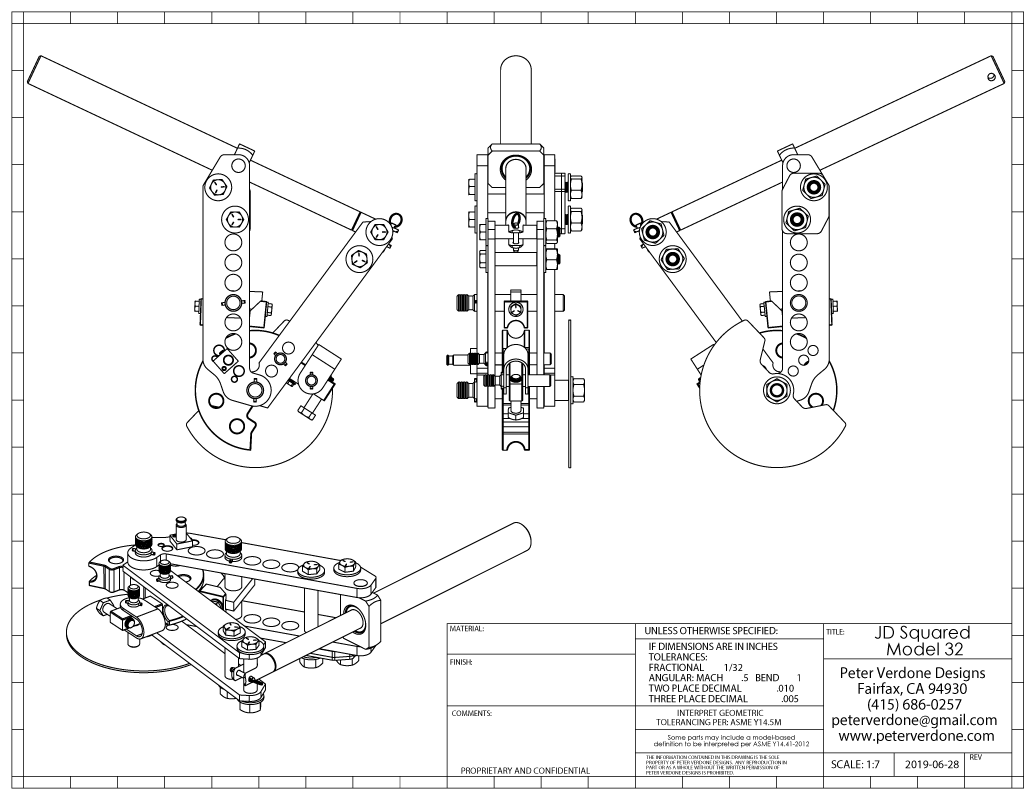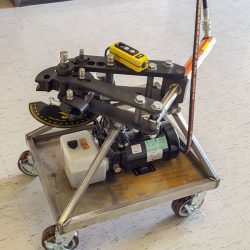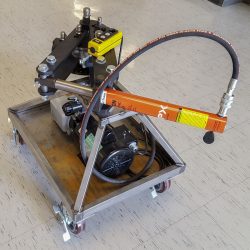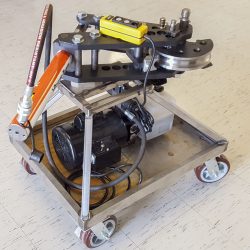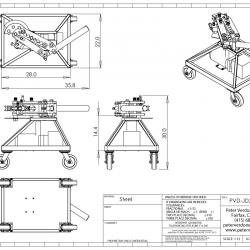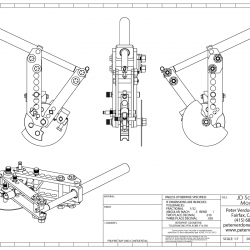This may not seem like much but it’s pretty exciting for me.
Bending tubes is an important part of making things out of metal. Everyone that works with metal needs a bender of some sort or is looking to find one. I’ve had one for a long time, an old DiAcro #4 but because of my situation it ended up in storage. It took up a ton of space and needed to be bolted down and I can’t do that now. I use a press bending setup for most of my bicycle work, other specialist work I contract out. So, I lent it out to Cameron Falconer. After a few years, in December, I sold it to him. He really wanted it. We made a deal and it was gone.
Most bicycle folks are probably thinking, “What the hell, bro. You had the dream bender.” Sure. It’s great but not for what I really need. I don’t build production bikes. I also don’t have a space where I can bolt a bender down to use. The DiAcro is fully manual so it needed to be bolted down. It can be modified for hydraulic use but it still wasn’t going to do what I needed to do. I need something that I can use for motorcycle chassis tubes (1.25″+) and general fabrication (2.0″). Also, something portable and handy…and that gets out of the way when not in use.
Now, I needed a bender that I could really use. I went down all kinds of avenues but finally ended up with a JD2 Model 32 Hydro-electric. There are a ton of dies available for it and they are very well priced. The dies come in sizes from 0.50″ to 2.50″, which is awesome! If you aren’t used to working on projects, this is a big deal.
With the bender sorted, I needed a cart for it. You’re not going to find a lot of great solutions online for a mobile bending cart so I set to drawing.
My goals were:
- Small footprint
- Easy to roll over rough surfaces
- Self contained
- As compact as possible so it can be moved in a passenger car
- Center of mass centered over the wheels
- Fit through most doorways
- Nice looking and easy to be around
I think I accomplished these goals.
I reverse engineered the bender and approximated the power unit size so that I could place them very low, close together, but also locate the center of mass centrally over the wheels. This also helped me place the mechanism in the right place in space and rotated for a narrow clearance. That explains the shift of the bender mount.
The reverse engineering will come in handy when I do some planned modifications to the bender, to do better quality bends and with thinner tubes. I expect to do a rolling follow block and more secure clamp.
The cart frame was constructed with 2″ x 1″ x 1/16″ and 1″ x 1″ x 1/16″ rectangular tube with some 1/8″ plate and some thicker plate for spacers. It seems plenty strong for the task although the 1/8″ thick floor plate and end caps could have been 3/32″. My goal is stable and solid but not a lot heavier than need be.
I’ll get this powder coated soon and post some nicer photos when that is done. Maybe a red krinkle coat.
This cart is similar to but an improvement in several ways to the Stakesy’s JD2 (M32EH) cart that is sold in England. It’s odd that something like this isn’t sold in the United States.
I have a 1-1/4″ x 4.5″ CLR die in hand and a 3/4″ x 2.25″ CLR die on order.


